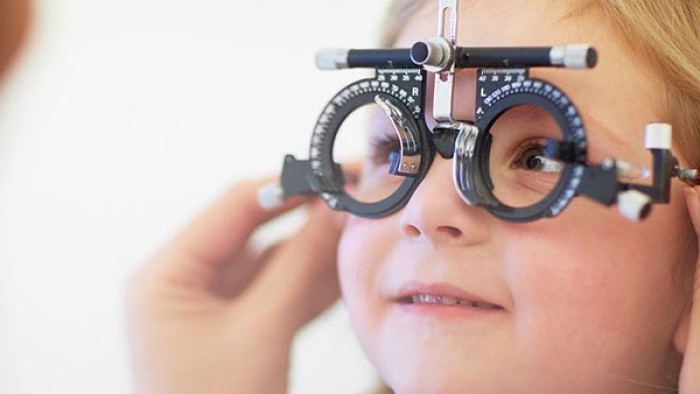
Facilities available at Khidmah Eye Hospital for diagnosis and treatment of Padiatrics:
Children experience a variety of eye problems, many quite distinct from adult eye diseases. Pediatric ophthalmologists are specially trained to manage the following disorders at KHIDMAH EYE HOSPITAL
- Infections (Conjunctivitis).
- Strabismus is a misalignment of the eyes that affects 2-4% of the population; it is often associated with amblyopia. The inward turning gaze commonly referred to as "crossed-eyes" is an example of strabismus. The term strabismus applies to other types of misalignments, including an upward, downward, or outward turning eye.
- Amblyopia (aka lazy eye) occurs when the vision of one eye is significantly better than the other eye, and the brain begins to rely on the better eye and ignore the weaker one. Amblyopia affects 4% of the population and is clinically diagnosed when the refractive error of one eye is more than 1.5 diopters different from the other eye (anisometropia) or one of the eye is misaligned for a long period of time (Strabismus). The management of amblyopia involves correcting of significant refractive errors and using techniques that encourage the brain to pay attention to the weaker eye such as patching the stronger eye (occlusion therapy).
- Blocked tear ducts.
- Ptosis
- Retinopathy of prematurity
- Nystagmus
- Visual inattention [1]
- Pediatric cataracts
- Pediatric glaucoma
- Abnormal vision development
- Genetic disorders often cause eye problems for affected children. Since approximately 30% of genetic syndromes affect the eyes, examination by a pediatric ophthalmologist can help with the diagnosis of genetic conditions. Many pediatric ophthalmologists participate with multi-disciplinary medical teams that treat children with genetic syndromes.
- Congenital malformations affecting vision or the tear drainage duct system can be evaluated and possibly surgically corrected by a pediatric ophthalmologist.
- Orbital tumours
- Refractive errors such as myopia (near-sightedness), hyperopia (far-sightedness) and astigmatism can often be corrected with prescriptions for glasses or contacts.
- Accommodative insufficiency
- Convergence insufficiency and asthenopia
- Evaluation of visual issues in education, including dyslexia and attention deficit disorder.
Pediatric ophthalmologists often work in conjunction with orthoptists in the treatment of strabismus.
